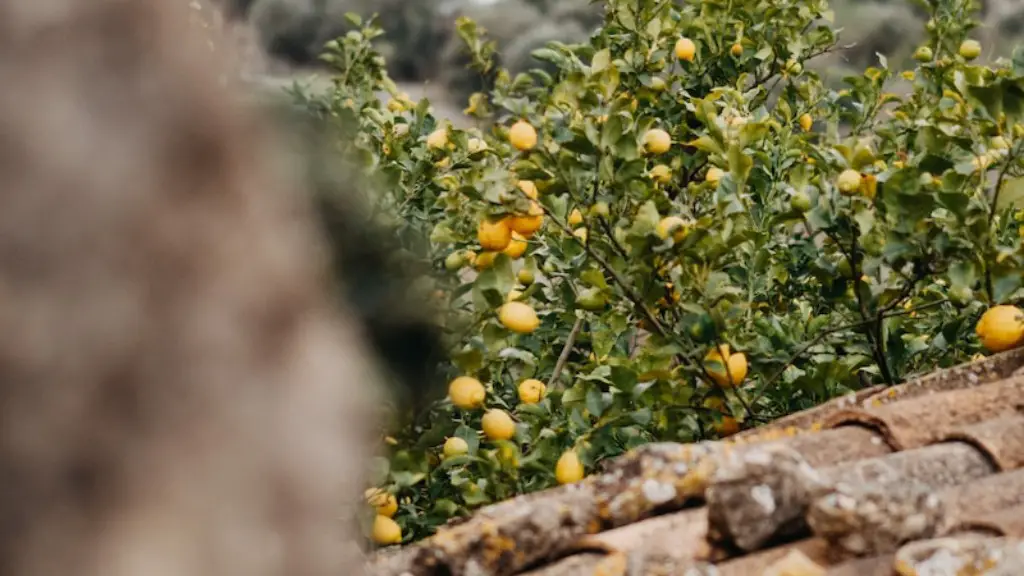Lemon trees need specific climatic conditions in order to survive, and freezing temperatures certainly are not a part of that. A lemon tree will succumb to freezing temperatures, and die if it is exposed to prolonged periods of below freezing temperatures. Knowing the warning signs of impending cold weather is essential for citrus farmers and home gardeners alike.
In order for a lemon tree to survive a freeze, it must have plenty of water, a semi-arid location with full sun exposure and the right type of fertilizer and support. This provides the necessary nutrients and environmental conditions that the tree needs to withstand the extreme cold weather. Additionally, it’s important to keep the tree well pruned so that it can absorb warmth and nutrients, and to protect the leaves from damage.
If the temperature gets to close to freezing, it’s important to provide the tree with extra protection. Covers such as burlap, hessian fabric and bubble wrap can be used to provide insulation. To protect the roots, a protective mulch can be applied and left to dry, creating a heat-retaining layer around the tree. Cold frames can also be helpful during cold spells as they provide a gentle and warm microclimate that will protect the tree from cold winds.
Another important factor to consider is the timing of the freeze. If a freeze is expected, it’s important to be proactive and prepare the tree before the temperature drops. Frost protectors like propane heaters, frost blankets and fans can be used to shield the tree from any cold air. Additionally, it’s important to ensure that during the cool weather the tree is hydrated and not left to dry out.
In the event of a freeze, it’s important to take immediate action to save the tree. If the tree has frozen, a hard prune can be used to cut away any dead leaves, fruit or branches and encourage new growth. Additionally, extra water and fertilizer can help to promote growth and prevent further damage. It’s important to monitor the tree for several weeks after a freeze to make sure that it is not experiencing any further damage.
Signs & Symptoms of Freezing Temperatures on Lemon Trees
A common sign of potential freezing temperatures on a lemon tree is a yellowing of the foliage. If a tree has been exposed to extreme temperatures, it may not have the energy to produce healthy green leaves and will start to yellow. Another sign is a general slow down in its growth. The tree may not have enough energy and resources to produce new growth if it is under stress from the cold. Additionally, brown spots may start to appear on the leaves and the bark may start to crack. These are signs of dehydration and cold damage which could lead to further health problems.
Caring for a Lemon Tree During Cold Weather
In order to protect a lemon tree from freezing temperatures, it should be planted in an area of full sun, with well-drained soil and adequate water. Additionally, it’s important to keep the soil warm by adding a layer of mulch and using frost protectors. Additionally, make sure to trim away any dead or diseased foliage and watch for signs of stress, such as yellowing leaves or cracking bark. Taking these steps will help ensure that the tree receives the proper nutrients, warmth and protection from harsh weather.
Types of Protection From Freezing Temperatures
There are several ways to protect a lemon tree from freezing temperatures. Covers such as burlap and hessian fabric can be used to create a protective microclimate. Alternatively, bubble wrap can be used to provide insulation and warm air to the tree. Additionally, frost blankets, propane heaters and fans can all be used to help warm the area and keep the temperature at a level where the lemon tree can survive.
Helpful Tips For Protecting Lemon Trees From Freezing Temperatures
It’s important to be aware of frost warnings in the area and take precautionary steps like watering the tree a few hours before the expected freeze. To provide extra insulation and heat, blankets, sheets and newspapers can be used to cover the tree. Additionally, wrap the trunks and branches of a lemon tree with bubble wrap or a frost fighter wrap and place lights inside the bubble wrap for a little extra warmth. Potted plants can also be moved indoors or to sheltered areas instead of being left outside in the cold.
Recovering From a Freeze
If a lemon tree has been exposed to freezing temperatures, it’s important to take immediate action to help it recover. Cut away any dead or damaged leaves, branches, and fruit and ensure that the tree gets plenty of water. Increase fertilization and use frost protectors to warm the area. Additionally, monitor the tree for several weeks after the freeze to make sure it is not experiencing any further damage.


